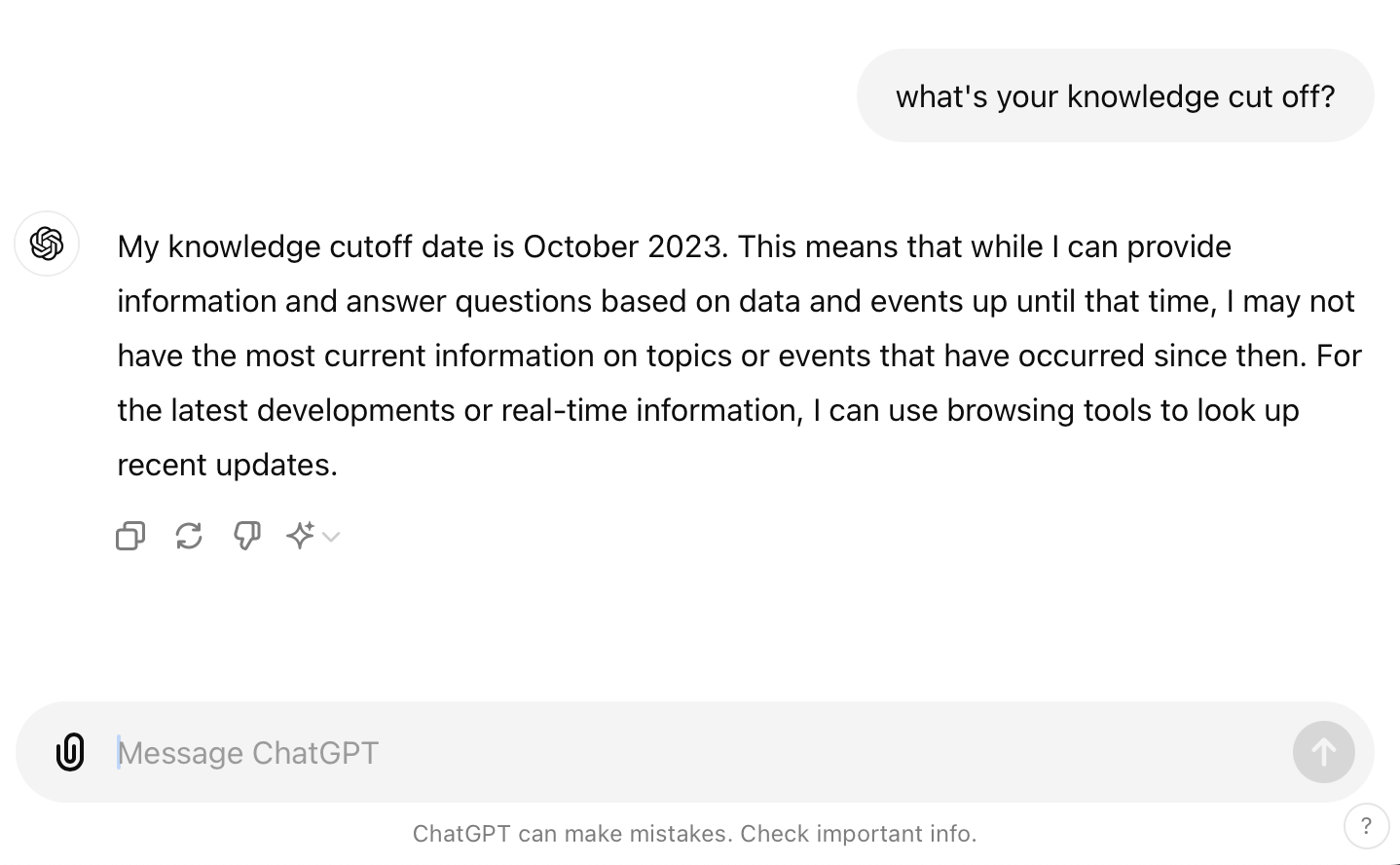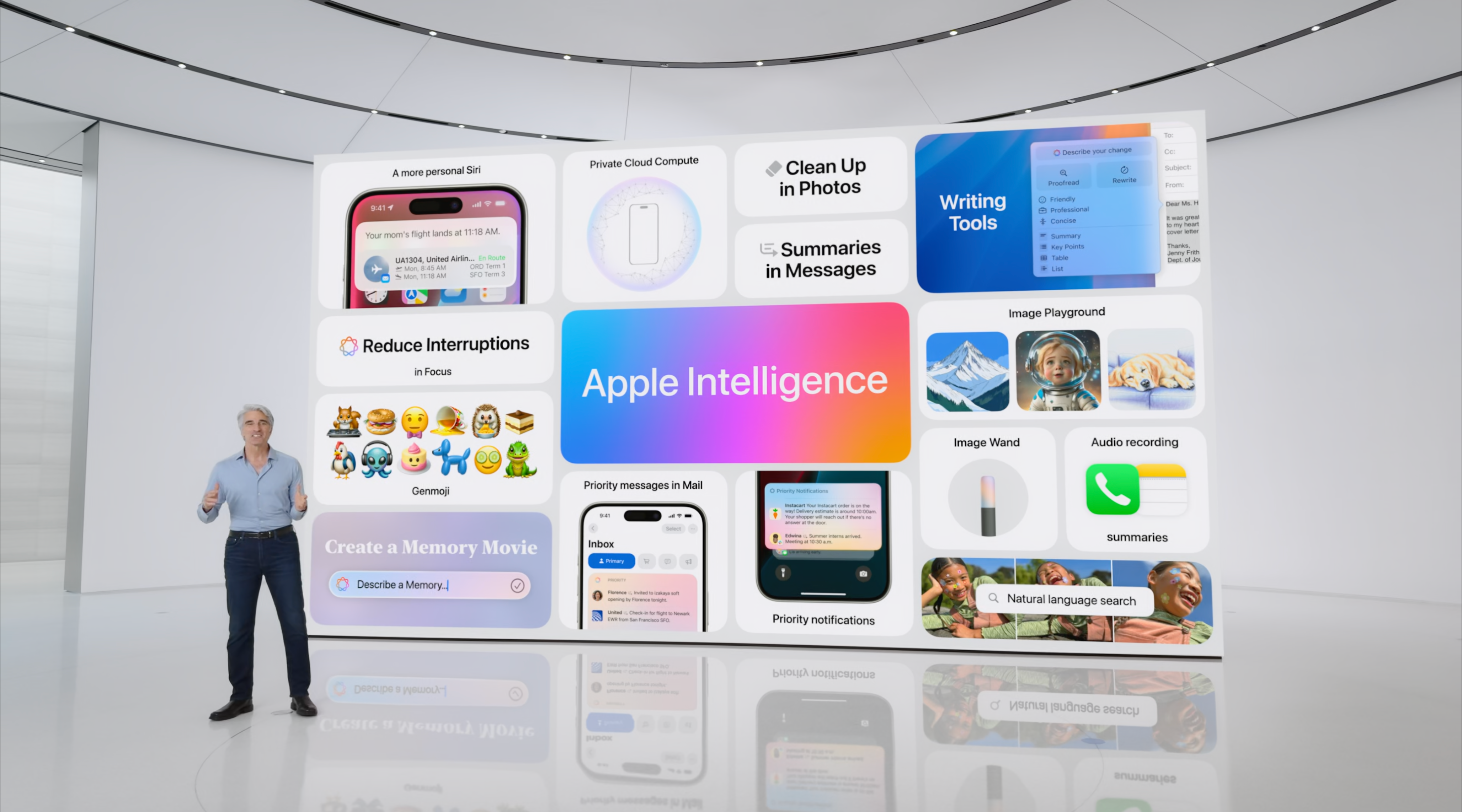
Why AI Solutions Like ChatGPT Haven't Resonated With Me - Exploring the Top 5 Reasons

Why AI Solutions Like ChatGPT Haven’t Resonated With Me - Exploring the Top 5 Reasons
Quick Links
- AI Is Just Another Buzzword
- I Struggle to Integrate AI Into My Work Life
- My Life Isn’t Complicated Enough Outside of Work
- These Tools Still Need Hand Holding
- Personalized AI Tech Looks More Promising
Are you wondering what all the ChatGPT fuss is about? Have you yet to find any real-world uses for large language models and image generators? You’re not alone.
AI Is Just Another Buzzword
It can seem like the whole world has gone AI mad. Relatively speaking, few terms break through to the mainstream quite like “AI” has. Now AI joins terms like mobile app, VR, and cryptocurrency as a term that your mom might casually ask “what’s all the fuss about?” Just like those other three examples, AI can also feel like a fad.
This isn’t to say there aren’t legitimate uses for this sort of technology, but tools like ChatGPT, Google Gemini, and Bing Chat can feel like a gimmick. For many, AI’s notoriety precedes it. The term appeared on daytime TV for all the wrong reasons, like its ability to help you cheat on assignments or because of backlash from artists whose creativity was used to train many of the models.
Arguably the most promising uses for AI are things many of us will benefit from without ever having to interact with the technology. Machine learning has been used in product development, medical research, and to solve mathematical problems for decades already. Take the problem of Eroom’s law (Moore’s law, reversed) which is the observation that drug discovery is becoming slower and more expensive over time.
It is hoped that automation made possible by modern AI models can help to speed up everything from data analysis to the designing and running of clinical trials as described in one Nature article . This could apply to other industries too, like the ability to build better batteries. Microsoft’s Azure Quantum Elements tool narrowed a selection of 32 million theoretical materials down to just 18 in 80 hours .
What is currently referred to as AI is a rebrand of machine learning. These models aren’t particularly new, but they are better than ever before. The hardware required to run them both locally and remotely makes them more viable than ever before. These tools can’t think or reason or feel, they’re a world away from being HAL-9000 (for better or worse).

So you’re forgiven for feeling jaded when you see the term “AI” splashed around as a mark of quality or genuine innovation. Facebook’s Meta AI is a good example that’s garnered a lot of eye-rolls since being foisted upon users. It has invaded the search box across multiple apps, it bugs you like a clingy ex, and still manages to miss the mark entirely (as you can see above).
I Struggle to Integrate AI Into My Work Life
I wrote this article the old-fashioned way, using lots of coffee and a keyboard. I’m not employed to come up with auto-generated copy, and I’d almost certainly get fired for turning in something authored by ChatGPT (assuming my editors could tell). As an editor, I’m looking for authority, personal experience, readability and flow.
AI can communicate in natural language, but it’s still no replacement for a human being. When I search the web or visit the front page of a website I’m not looking for troubleshooting guides, roundups, reviews, or opinion pieces that were concocted by a large language model. Tools like ChatGPT are very good word prediction engines that base their text output on training data gathered from all over the web.
I even find it difficult to use a tool like ChatGPT to come up with ideas or spot trends I might have missed. Some writers have great success with this, so I don’t doub that it’s possible. I still get all of my best ideas at inopportune moments, like in the shower or when I’m working out after leaving my iPhone at home.
I’m not particularly comfortable using AI-generated images either. I used DALL-E for an image once, in an article about how Facebook is turning into a graveyard of bots posting AI-generated images . The image itself was suitably broken, an accidental perfect parody of the very thing I was discussing.
If you’re able to integrate tools like ChatGPT into your work life, I salute you. Formal letters are sterile and time-consuming, I bet ChatGPT is great for that. You could generate a CV using such a tool, then spice it up with your own words to stand out from the crowd. This is just a selection of the basic tasks that ChatGPT is good for , but few of them get me particularly excited.
My Life Isn’t Complicated Enough Outside of Work
Call me boring, but I don’t need an AI tool to summarize my emails or help me draft new ones. I’m perfectly fine with ignoring my inbox, thanks. I don’t run a Dungeons & Dragons group where I need help coming up with characters or scenarios, and even if I did I’m not sure I’d defer the more enticing creative aspects of running a campaign to a word prediction machine.

I’m not an artist, and I have my own ethical concerns about using generative AI trained on other people’s work. I still find it relatively easy to spot AI-generated images thanks to hallucinations like extra fingers, noisy fine details, and ghastly uncanny valley expressions.
If I’m going to be creative, it’s going to be all me. I don’t want ChatGPT to write poetry for me, or plan events. I’d rather do that myself while my brain are still work good. I’m also not going to pretend that my shutting the door on these sorts of tools isn’t heavily influenced by personal preference.
I’ve read countless Reddit threads and social media posts about how people are using these tools, and I’m still not convinced I need ChatGPT and others in my life.
These Tools Still Need Hand Holding
My other issue with ChatGPT and similar tools is that I have a hard time trusting them. This is one of the reasons I don’t think you should use ChatGPT as a substitute for web search . I like to source my own information and decide what’s trustworthy and what’s not, or at the very least where the bias may lie.

ChatGPT has been particularly bad for this in the past. Things have improved and the current free version of ChatGPT is able to interpret web results, but the knowledge cutoff is still nearly a year out of date in terms of training data. There are many examples of ChatGPT getting simple sums wrong , and the LLM is known to make things up if it lacks the training data to make a decision.
Relying on these sorts of tools to help you accomplish tasks you aren’t familiar with can backfire. Programmers can make good use generative AI to help speed up their workflows, but how can those with little to no knowledge audit that code? This technology is far from “the great equalizer” in terms of technical know-how.
Because I can’t implicitly trust tools like ChatGPT, I have a hard time embracing them. Some recommend using these tools for legal documents like contracts or the sort of letters you’d normally consult a lawyer or solicitor to write. While that sounds great in theory and could save you hundreds or thousands of dollars, it’s still too much of a gamble for me.
Personalized AI Tech Looks More Promising
Apple’s upcoming iOS, iPadOS, and macOS advancements, cleverly dubbed Apple Intelligence , seek to “humanize” this sort of technology by adding personal context. Siri will become a ChatGPT-like model that is better at understanding you and can also look deeper at your conversations, habits, and so on.
If voice assistants are to be anywhere near as useful as their real-world counterparts, they need to know a lot about you, your tastes, and your schedule. Apple hopes to accomplish this using mostly on-device processing, effectively training the assistant on your data.
Samsung is one smartphone manufacturer that wasted no time integrating many AI features into its brand of Android. The real stand-outs here are the AI image editing tools that neatly integrate into your photo library and allow you to easily perform fun edits on your own photos.

Apple
Microsoft is busy at work integrating Copilot into Windows which can help you do things like debug code in Notepad or remove image backgrounds in Paint . Microsoft has laid out its plans for Copilot+ PCs that handle many of these operations locally , though missteps have been made with its Recall feature that posed a privacy risk and forced the company to reassess.
Taking this sort of technology and effectively making it an invisible part of our daily workflows is nothing new, but it’s refreshing at a time when the technology is dangled in front of consumers like a golden carrot. Remember that Apple’s machine learning Neural Engine has been included on every iPhone system-on-chip since the iPhone 8, enabling features like object recognition in Photos and the Camera app.
Every smartphone manufacturer has a night mode camera feature that uses machine learning to artificially brighten images. Shazam has been able to recognize music based on an audio sample since 2002 (yes, really), and Google can go one better and recognize music that you hum. None of this is new, and it was marketed and integrated purely on its merits rather than to simply chase a trend.
For now, I’m just hoping to see a version of Siri that doesn’t suck . I’ll just continue rolling my eyes when I see the term used to sell toasters, while being acutely aware that generative AI is supercharging scams and that the road ahead is frought with challenges (and hopefully some big victories too).
Also read:
- [New] 2024 Approved InstaStars Academy How to Amass 1,000+ Followers Each Month
- [New] The Decade's Most Ingenious Frames & Organizers '24
- [Updated] Global Audiences, Local Stories - Crafting Engaging #InstagramCaptions
- [Updated] Strategies for Enhancing Your Apple Podcast Visibility
- [Updated] Streamline Your Game Logs Advanced CamCapturing Techniques for 2024
- [Updated] Telegram Marketing Made Simple For Those Just Starting Out
- 2024 Approved Setting Up a Facebook Donation Challenge
- 2024 Approved Unlocking GoPro's Full Potential
- Crafting an Inviting Subscribe Icon for YouTube Videographers for 2024
- Ensure Compatibility: Downloading Updated Drivers for Your HP OfficeJet Pro 9015 Printer
- How to Make Every Instagram Story Count – Your Complete Guide for 2024
- In 2024, From Start to Finish Seamless Editing with Kinemaster
- In 2024, Fundamentals of Archiving Webcam Conversations
- In 2024, The Soundwaves Compreeved Websites for Skype Audio
- In 2024, Top-Tier HDR Cameras Explained & Compared
- Quick Tricks to Overcome PIN Failures in Win10/Win11
- Title: Why AI Solutions Like ChatGPT Haven't Resonated With Me - Exploring the Top 5 Reasons
- Author: Mark
- Created at : 2024-12-24 00:25:08
- Updated at : 2024-12-25 02:15:37
- Link: https://some-guidance.techidaily.com/why-ai-solutions-like-chatgpt-havent-resonated-with-me-exploring-the-top-5-reasons/
- License: This work is licensed under CC BY-NC-SA 4.0.